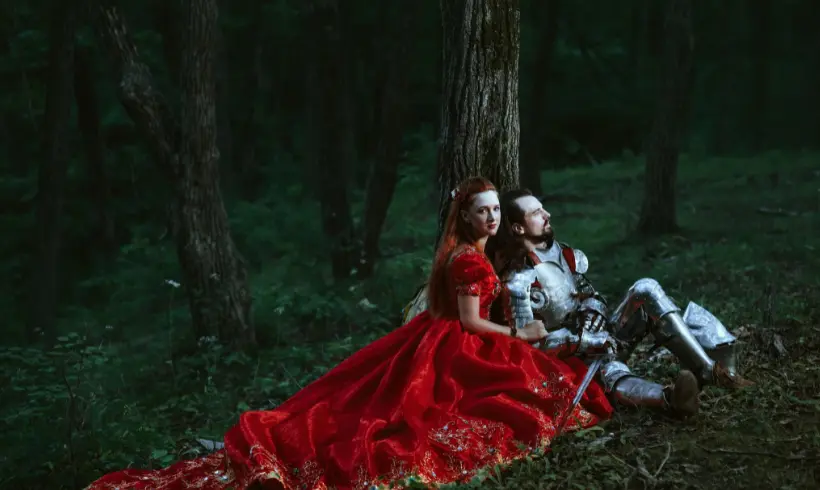Whether to entertain or escape reality, we look for good stories to connect with our emotions, such as the satisfaction we get from fiction.
Over the past few years, the novel has expanded its reach thanks to the growth of web literature, self-publishing, and the expansion of the eBook and audiobook market.
Like other forms of prose, the novel has a narrator and a story, but other elements make this writing format unique.
Below, we tell you what these elements are, including the characteristics of the novel as a literary genre.
Basically, the novel is a narrative of considerable length and a certain degree of complexity that deals with human experience from an imaginative point of view.
Generally, the plot is presented through a series of events that involve one or more characters in a specific context.
The history of the novel goes back some two thousand years, with its origins in ancient times, specifically in Greece and Rome, in addition to the later manifestations of chivalric romance and the Renaissance novel of later centuries.
The genre has starred in the modern literary era due to its popularity. In fact, it is the only literary form that can compete against cinema.
Below, you will find the characteristics that have driven the development of the novel.
At the end we invite you to visit:
| Best Books: The Best 20 Novels [Paid]
Length or extension
A work of fiction is called a novel when the length of the text reaches 40,000 words or approximately 200 pages.
However, the most popular novels are between 60,000 and 200,000 words long. It is no coincidence that the classic books of world literature are of considerable length.
When the novelist seeks to present something more important than the main character, such as representing a society or a specific historical period, the novel tends to be longer.
The length of the novel allows the authors to play with all the elements of fiction and take them to the highest level.
Fiction genre
The novel belongs to fiction because its creation requires skills to devise stories through the written word to entertain or instruct. The author does not show facts of real life.
Instead, create an entirely imaginary environment through written expression.
Symbolism or meaning
This is one of the characteristics of the novel that is often overlooked. The novelist is constantly concerned with establishing situations, delineating the psyche of the characters, and presenting the climax of the story, and a good ending.
However, many times, the aesthetics of a work is also given by subliminal factors unrelated to the author.
In this way, the novel acquires greater depth. Many times, the symbolism of work borders on myth, that is, the characters become symbols or representations of human impulses, experiences, or people.
For example, the term “quixotic” comes from the novel by Miguel de Cervantes and alludes to the pursuit of an ideal foolishly.
The story is divided into parts or chapters
Since it is a long story, the plot of the novel is usually structured in sections or chapters.
Chapters revolve around a small fragment of the work, unified by plot or character. If the story is so short as not to require such divisions, then it is not considered a novel.
Timelines and points of view
The novel does not have a standard structure. Instead of the story being told chronologically, the story can vary between different periods to heighten the level of suspense in the plot and even show specific themes.
Also, the novel can present different perspectives for various characters in the story, rather than focusing exclusively on the protagonist.
A novel can be narrated in the first person or in the third person, although there are some cases in which the second-person perspective is also used.
Focus on characters
Most senior-level novelists are concerned with the plot, but characters are also an important element in the story.
Human experience and psychology play a key role in character development and allow readers to identify with and emotionally connect to the story.
Plot structure in three acts
The plot structure is often presented in three acts. In the initial part, the author will familiarize the audience with the main characters of the story and the world in which the events unfold.
This first act also shows a specific situation to surprise the reader and show the backstory.
In the second act, conflicts appear in the path of the protagonists, who encounter obstacles and small feats to achieve.
In the middle of the story, major shifts often occur to increase tension, leading to the peak of emotions and storytelling.
Finally, the third act shows the consequences of the events narrated throughout the story and the ending.
Action is determined by the setting
The setting of the story can play a key role in the reader’s imagination. For example, Sherlock Holmes would behave very differently if his life had taken place in Mexico.
The setting conditions the characters and represents one of the main attractions of the story.
The setting of the novel does not always come from real life. Many times, the author can create a completely fictional universe, not only in the setting but also in developing the characters and actions.
The novel seeks to address or represent any form of reality. Obviously, novels are pure fiction, but they also include elements of realism.
Finally, it is necessary to say that the characteristics of the novel developed as storytelling evolved, from the earliest oral tales to the interactive novels of today.
If you are looking for inspiration, want to study a subject in depth, or just want to feel the pleasure of reading, then we invite you to take a look at our extensive collection of +3,500 free books.
Other articles that may interest you

In the following article, you will find all the elements that make it possible to build the structure of a…

If you want to know the definition of a romance novel, its origins, and its main characteristics, this article is…

In the following lines, we tell you everything you need to know about the crime novel, including its main characteristics,…

The epistolary novel is one of the most influential literary styles in history. In this type of work, the story…

In this article, you will find the literary genre to which the novel belongs, but only after knowing the importance…

Below, we've compiled for you our top 10 novels that were made into movies. If you've made it to this…

Below, you will find our top 10 novels you should read. We are clear that many titles from our list…

This article contains all the information you need about adventure novels, from their origins and most relevant characteristics. In addition,…

In this article, we will explore the science fiction novel, its meaning, origins, most important characteristics, and you will learn…

In this article, we will show you the most important characteristics of the didactic novel, its most important works, and…

What is the dystopian novel and what characteristics differentiate it from other novels? When did this style originate? What are…

In this article, we will discuss the concept of the historical novel in the literary context, its origins, and its…

Undoubtedly, the novel of chivalry is one of the most influential narrative subgenres in the world, specifically because of its…

Below you will find all the information you need about the novel as a literary genre, including its origins, characteristics,…







